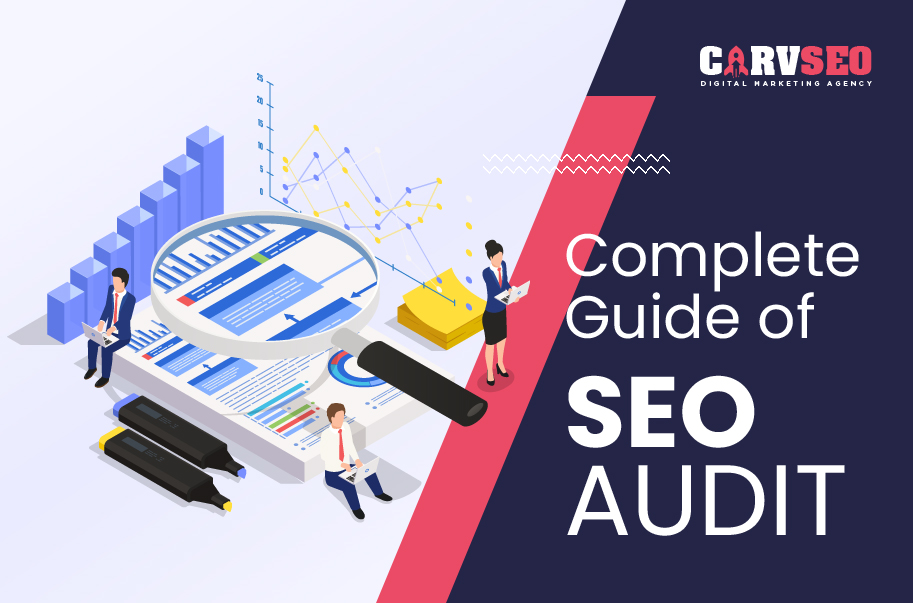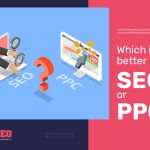What is an SEO Audit and why do you need it?
An SEO audit is meant to find the strength, weakness and an overview of the website. Most marketers will prefer to do an SEO for your website to increase the organic presence and traffic. This will help us to build a brand and make sturdy results in the long run. In SEO we can’t get results all of sudden, it takes time to give results but the quality of the result will be effective.
SEO audit should be performed on a regular basis, Because keeping the SEO Strategy up to date and performing it can reduce the errors and can optimise it according to the algorithm updates and also you can find the potential customers.
How to do a SEO Audit?
An SEO audit is nothing but a health checkup for a website. SEO audit should consist of structural and content components that affect the visibility and traffic of the website. An audit should consist of,
- On Page
- Off Page
- Technical SEO
Steps to perform a website audit,
- Crawl your website or run a website audit through any tool.
- Perform Manual search for keywords what they are ranking for.
- Check your Page speed.
- Always make sure that only one version of the website is browsable, If not redirect it to one.
- Conduct ON – Page and Technical errors.
- Conduct OFF – Page and Backlink Audit .
ON Page SEO Checklist
On page or On Site SEO is the process of optimising the front end and some back end that helps us to rank the website and improve the visibility in search engines like Google, Bing and Yahoo etc. Some of the most important and common factors on On page SEO are,
Title Tags: Title tags are the most important factor that make a user click on the website. It helps us increase the Click Through Rate (CTR).
Meta Description: The meta description describes the overview of the content that is presented on the website.
Headers: Headers are also an important part of the website ranking in the SERP pages. It has six types from H1 to H6. You can place the important keywords on the H1 tags. It will help to rank a page sometimes your H1 tags may appear on the search results.
Image ALT Tags: Each image should have a tag not only for the SEO purpose, when there is a server down time or when the image can’t load the text will convey the message what’s in it.
URL Type: The URL must be user friendly and it should not contain underscore on it. It should represent what’s in the page. The URL and content present in the page should alway be relevant.
Page Speed : The page speed is another important factor, Your page must be loaded within 3 sec. When it takes more time to load the page the user never stays on the site they might exit away from the page. Websites should be always optimised to keep the users engaged and make sure your website is Mobile-friendly.
Keyword Analysis: When it comes to Keyword Analysis, It is the process of analysing the keywords or the search phrases which bring traffic to the website through organic search and also an PPC campaigns.
High Quality Content: The content is always a king,A website should always contain high quality and unique content. It helps to rank better on SERP pages according to the weightage of the content and does satisfy the user.
Internal Linking: An internal linking is nothing but any link from one page on your website to another page on your website. By linking internally we can help the Search Engines to find the content through links. If there are no links in your page any search engine will not find your pages on the website.
Image Optimization: It is nothing but the optimization of images by reducing the size of it and also providing the right value to the website. When an image contains higher storage it will defect the page load speed.
OFF Page SEO Checklist
Off page optimization refers to the things taken care of the website from the outer surface in order to improve the visibility and the rankings.
Steps to perform a off page analysis,
- Crawl your site on any website audit tools like semrush, Ahref, Moz etc.
- Analyse your Backlink profile
- Check your competitors backlinks
- Fix the errors and Disallow the toxic links
- Do an Internal Linking to each pages
- Update the NAP and optimise it locally
Technical SEO Checklist
The first step in any complete SEO strategy is improving your technical SEO. Important elements of Technical SEO are crawling, indexing, rendering, and website architecture.
Things to analysis on technical audit,
- Plan your website structure.
Don’t create it for a search engine, structure it for a human, and a search engine can read your site through links but humans cannot.
- Make sure that your website is indexed and Crawlable.
The indexing and Crawling are two different things, if your content or website is crawlable that doesn’t mean it’s indexable and also if your site doesn’t crawl properly google can’t index it. Check with Google Search Console for the index status and further errors.
- Make sure your site is Secure and Accessible.
Always ensure that you have applied an Active SSL for your website, HTTPs will help you to protect the data. “HTTPS is a confirmed lightweight ranking factor” said by John Mueller. Make sure that site is accessible at one domain, because it will cause confusion among the visitors and if not do a permanent redirection. Ie,
- Make sure your website loads fast and Mobile friendly.
Page speed is one of the important ranking factors. When it comes to page speed the core web vitals plays a major role in it. The core web vitals are the subset of the web pages each and every page we should optimise according to it. Core web vitals has been classified into three types and they refers to three different functions, those are
Largest Contentful Paint (LCP): measures loading performance. To provide a good user experience, LCP should occur within 2.5 seconds of when the page first starts loading.
First Input Delay (FID): measures interactivity. To provide a good user experience, pages should have a FID of 100 milliseconds or less.
Cumulative Layout Shift (CLS): measures visual stability. To provide a good user experience, pages should maintain a CLS of 0.1. or less.
The number of mobile users has been increased so the search will be higher when we compared to the desktop users because of the portability. So the website should be optimised for mobile too. Use the compressions like Gzip compression or any other compression tools to optimise image and Javascript to reduce the load time.
Can we Stop Doing SEO Once It's Successful Online?
The answer is “No”, Why because the rankings and your online visibility will start to decrease when you stop it and the graph will decline eventually until you start the SEO strategic process again. If your business is going down it will be a plus point for the business competitors because they use this space to build more links and other processes to push you down. Google may introduce new algorithms and you’ll leave behind all the risks. So the SEO is not an “One Time Process” it’s an ongoing process.
If your’e looking to audit your website?
Enter the details to get a free SEO Audit within a minute!









